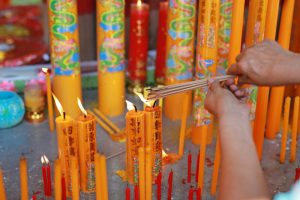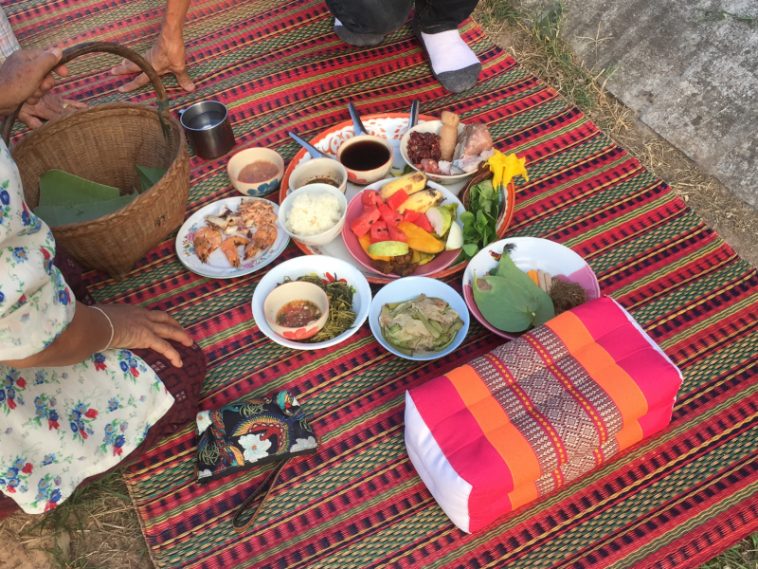The season of remembering the dead is here, followed by a sacred series of religious festivals. In this holy season, we take the opportunity to observe the much-revered Mahalaya Amavasya.
People across the country remember their forefathers during these days and perform activities to make their souls happy in the after-world. The sacred occasion of Mahalaya Amavasya bids farewell to the ancestors and welcomes Maa Durga to earth, and bless people.
Through this account, let’s understand Mahalaya Amavasya and take a glance at related traditions across the world.
What is Mahalaya Amavasya?
The Mahalaya Amavasya is when the Pitru Paksha period (around 15 days) culminates, and the Devi Paksha commences. Pitru Paksha is a period of worshipping the ancestors and praying for the peace of their souls.
The devotees of Durga Maa celebrate this pious occasion of Mahalaya a week before Durga Puja. It is on 6th October this year.
It is observed not only in West Bengal but also in Odisha, Tripura, and Karnataka.
Why is Mahalaya Amavasya Observed?
Observed on the fifteenth day of the Amavasya in the month of Ashwin; Mahalaya, or Mahalaya Amavasya signifies the end of Pitru Paksha Shradh and the beginning of Durga Puja or Navratri.
As per the belief of Hindus; Brahma, Vishnu, and Maheswar created Maa Durga on this day to defeat the demon king Mahishasura.
Thus, devotees mark this day as the arrival of Goddess Durga to Earth from Kailash Parvat with her divine powers.
Another legend is that of Karna. He was known for his acts of charity and donated gold and silver generously. Upon his death, he received what he donated in hundred-fold. However, he did not have any food to eat. When he asked for something to eat, he only got gold and silver. He questioned Yama, the God of Death, about this. Lord Yama told him that in the afterlife, he could only get what he or his descendants had donated as charity in their lifetime.
Karna’s sons died at war, and he had only given alms in precious metals. He asked Yama for a chance to correct his mistake and came back to the earth for 15 days. These 15 days are observed as Mahalaya. In this time, he gave food and water to the poor and hungry. On the new moon day, Mahalaya Amavasya, he returned to the afterlife and had food in plenty.
How is Mahalaya Amavasya Observed?
Mahalaya rituals begin from the pre-dawn hours when the All India Radio program ‘Mahishasura Mardini’ airs. This is a soothing recitation of the scriptural verses of the ‘Chandi Kavya’, narrating the descent of Goddess Durga on earth.
In other parts of the country, people perform ‘tharpans’ for their ancestors and offer ‘pind-daan’. This ensures that the souls who have come down to the earth in this 15 day period receive food and water and return to the after-life satiated.
Similar Observances in Other Religions
Apart from Hindus, various other religions also commemorate their dead every year. Some of these religions and their traditions are:
- Christianity: With different denominations and country-specific cultural influences, Christians observe the remembrance of their dead in various ways. Some of these include All Saints’ Day, Halloween, and Ancestor Remembrance Day. During these occasions, they visit graves with flowers, attend church services, and follow the set traditional and cultural approaches. They process the occasion with the underlying belief that the dead will rise in God again.
- Judaism – The day to remember their dead is known as Yahrzeit (meaning death anniversary). It is traditionally observed on the anniversary of the Hebrew date, not the Gregorian date. On this day, they light a special long-burning candle and say Kaddish (a sanctification prayer) in the memory of their loved ones.
- Buddhism: Several steps are involved when it comes to such a tradition in Buddhism, depending on the Buddhist sect to which the deceased belonged. In a humble service, the family’s dedication to the Buddha and respect for the deceased are reflected.
- Islam – Rituals and traditions vary as per different sects and locations. Islam believes in life after death and their customs are processed on this belief.

Similar Observations Across the World
Across continents, people remember the dead as per specific cultures and traditions.
- Halloween – Among the oldest occasions of the world, Halloween originally acknowledges the departed, prepares for the isolation of winter, and reflects on past deeds. It originated from the ancient Celtic festival of Samhain that marked the end of summers and commences cold, dark winters – the annual time associated to human death.
As per the Celtic belief, on October 31 – the night before the New Year, the boundary between the two worlds (the living and the dead) are blurred, and the ghosts of the dead return to earth.
- All Souls’ Day – Also known as All Saints’ Day and Defuncts’ Day (in Hungary, France, Italy, and Ecuador), or Commemoration of the Faithful Departed; All Saints’ Day is observed by Christians in many countries on 2nd November every year. People make offerings on this day and take flowers to their relatives’ graves.
- Ancestor Remembrance Day – Observed worldwide in various countries, this day commemorates the ancestors with remembrance, and love. In North America, people partake in several traditional ancestor celebrations.
- Día De Los Muertos – It translates to the Day of the Dead. Celebrated on 2nd November every year in Mexico, it is akin to Memorial Day in the United States. Families usually visit the graveyard and adorn the graves of their loved ones’.
- The Hungry Ghost Festival – Also called the Ghost Festival, this Chinese tradition is celebrated for a month. An ancient tradition, it involves paying respect to the spirits of the dead. It is observed in the seventh month of the lunar calendar.
- Gai Jatra – Honoring the dead or Gai Jatra – the Nepalese tradition is also known as Saya and is celebrated during monsoons. Locals believe that one day souls can enter into the world of the dead without having to go through the suffering of multiple rebirths. “Jatra” translates to a street festival and “Gai” stands for the cow. They believe that cows help the deceased soul to reach heaven. Thus the festival – Gai Jatra.
- Pchum Ben or Ben Thom – Observed in Cambodia (5th October 2021), it is a Buddhist celebration. The rituals continue for 15 days and the first 14 days are called “Ben Touch.” People visit local pagodas and throw rice balls there as well as light candles and listen to monks chanting.
- Obon – An annual Buddhist tradition, Obon is celebrated in mid-August in Japan. Being one of the main holiday times, Obon witnesses immense tourist footfall in the country. The Japanese believe that the spirits of their ancestors return to the eart on this day to visit them.
Irrespective of the religion, we agree that death is the common denominator of our lives. We all share this inevitable destination to which our life surrenders. However, how we remember our loved ones who went on this eternal journey differs from community to community.
Let’s make the most of these times and ponder on the contributions of our ancestors to our lives while we celebrate their existence.






